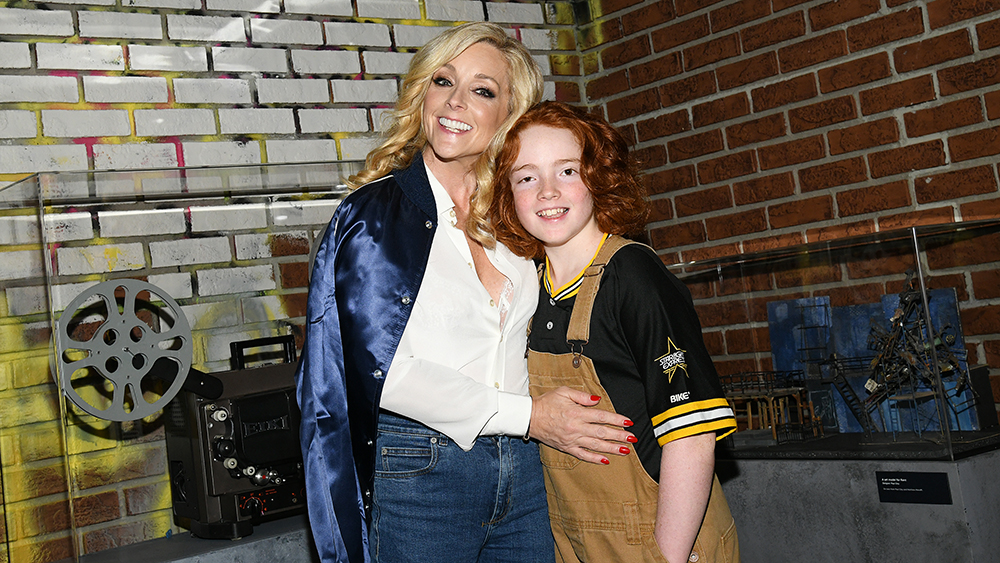
On Saturday evening in New York City, The Museum of Broadway — a first-of-its-kind museum in the theater district dedicated to showcasing the productions which have defined the Broadway stage — opened its doors for the first time, hosting a private event for industry personalities and theatermakers.
Inside, Broadway notables like Christine Ebersole, Jane Krakowski, David Rockwell and Anthony Rapp meandered their way through the three-story museum. Richard Kind put on his readers, taking time to digest each exhibit and point out the plays he thought weren’t very good. Roxane Gay posed with friends behind the diner counter in the “West Side Story” exhibit, and “Hamilton’s” Javier Muñoz played on the psychedelic swingset in the “Hair” installation.
Winding its way through three floors, The Museum of Broadway takes guests through a chronological history of the Broadway stage, from vaudeville and minstrelsy to the latest revival of Sondheim’s “Company.” As guests traverse the museum, they enter immersive installations of many of Broadway’s most influential and recognizable shows. Hidden throughout are gems large and small: Original finale costumes from the first production of “A Chorus Line,” on loan from The Public Theater; Meryl Streep’s costume from her Broadway debut; a pair of roller skates worn by Jane Krakowski in “Starlight Express.”
The museum begins in a Playbill room, displaying all the shows currently running on Broadway with QR codes to buy tickets. Downstairs in the gift shop, you can buy merchandise for all the current shows, books on Sondheim and trinket jewelry made from Broadway scenery. “Your keychain is made from a strip of marketing banner from the Los Angeles run of ‘The Phantom of the Opera,’” one souvenir’s label read.
Those trinkets seem to get to the point: The Museum of Broadway is, ultimately, about access to the Broadway stage. The hope is that the building — not a Times Square installation, but a museum proper –becomes an essential stop on the tourist’s itinerary to the theater district.
“We sometimes look at an industry as a category, and if we build the industry up through visiting, which we can only do in a small part but can contribute in some way, then that’s a win for everyone,” museum co-founder Diane Nicoletti told Variety on Saturday evening.
“In the Playbill room, part of the thinking is that a lot of tourists only know a couple shows. They don’t realize that there are 41 theaters and that many of them are full. We wanted to make sure all are treated equally in the room,” added Julie Boardman, Nicoletti’s co-founder counterpart. “I come from the producing side of Broadway, and I think a lot of people don’t even know how to buy a ticket.”
Though in recent years Broadway has lost many of the theatermakers who’ve shaped its stage — Hal Prince, Stephen Sondheim and, most recently, Angela Lansbury — many of the artists who appear throughout the exhibit toured it on Saturday.
“If all ‘Fiddler on the Roof’ was about is tradition, those of us who come to this place also get to be part of that tradition,” Tony-winning composer and lyricist Jason Robert Brown told Variety on Saturday. “It’s a really exciting place to be for two entirely different parts of my personality. There’s a part of me that just happens to love this stuff, and there’s the part of me that does this stuff. I’ve never been anywhere where those two sides get to interact.”
“Humbling is one of those bullshit words that people use,” Brown, whose current production of ‘Parade’ at New York City Center is rumored to be transferring to Broadway, continued. “But it really is humbling to think, ‘I do not in fact belong on the wall. Stephen Sondheim does.’ That I get to be is pretty amazing.’”
For others, like “A Strange Loop’s” L Morgan Lee, the museum was more about how far the industry has come — and how far it still has to go.
“It’s as if the child inside of me was, like, exploding. I grew up watching all of the old MGM musicals. Had I had something like this to come to, there’s no end to the dreams I could have had,” Lee, who this year became the first openly transgender actor to be nominated for a Tony Award, said.
“There are so many voices who are missing in these spaces, who we know are live and vibrant and happening, but haven’t had an opportunity to be seen on Broadway,” she continued. “People need access to tell their stories. The shows that are represented here got in, got through. Someone was able to nurture them and put them on the stage. There’s a lot of stories that’d be fantastic to be on the walls here that haven’t had that privilege to have a producer behind it. I’m really excited to see what the walls of this building will look like in five years.”
The Museum of Broadway opens to the public on Nov. 15.







